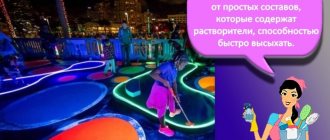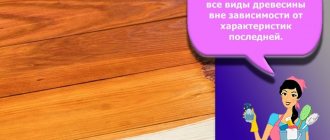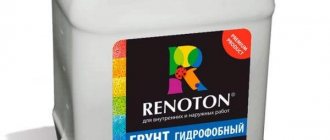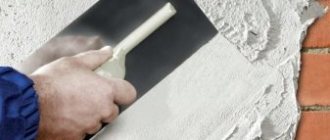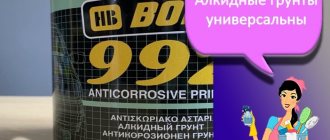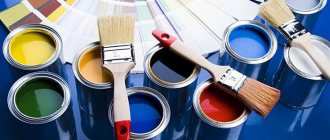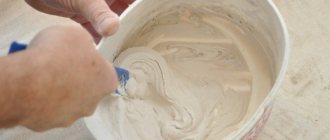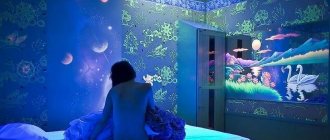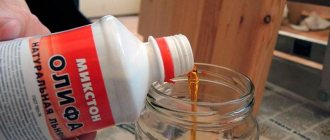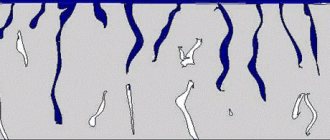Mirror paint: composition and release form
Paints with a mirror effect are available in aerosol cans, which simplifies the application of the composition to the prepared surface. The basis of this material is nitrocellulose varnish. At the production stage, this component is mixed with aluminum powder and other substances that ensure uniform distribution of the composition over the working surface.
Nitrocellulose varnish is responsible for creating a durable film. The mirror effect that characterizes this paint is provided by aluminum powder.
The final result that is obtained after drying of this material depends on the characteristics of the additional components. That is, the additives are responsible for ensuring that the base varnish lies evenly on the surface, and the aluminum powder forms a reflective layer.
Buy powder mirror paint chrome
You can buy powder paint at a competitive price from us or from an official dealer of the company.
- own production with unique developments;
- wide range of chrome powder paint;
- the ability to place an individual order for an agreed batch of supplies;
- maintenance at all stages;
- affordable prices.
You can purchase chrome paints from our production from distributors or directly from the company. You can fill out an application either on the website or by calling our call center operators.
You may also be interested in matte powder coatings or glossy powder coatings.
Request a call back
We will call you back shortly
Spraying metals and their oxides onto glass makes it possible to improve the quality of glass, as well as give it some additional useful properties. Surely many of us have noticed “one-way” mirrors in films. With their help, those outside the room can observe those inside. The latter, in turn, do not see those who are outside, and can only see their own reflection in such glass. Such glasses exist in reality and are most often used not for espionage, but to protect various objects from prying eyes, and mirror coating is used for their manufacture.
Scope of application
Paintwork with a mirror effect, as noted, is suitable for processing:
- metals;
- ceramics;
- plastic;
- concrete;
- wood;
- glass
In this regard, the scope of application of this dye is extensive. But more often this coating is used to process car body parts, mirror housings, and so on. The material can also be used for painting interior walls, decorative structures and other products.
Other Applications
When creating original interiors, mirror paint is used to cover walls and ceilings. They always work using a sprayer. Brushes and paint rollers are not suitable for painting with chrome finish.
Otherwise, the dyeing technology does not differ from conventional finishing methods. The material is used in the production of souvenirs (chameleon paint), Christmas tree decorations and coloring of various decorative elements.
The use of the described compositions is called diffuse chrome plating and is the simplest and most affordable way to achieve a mirror effect. Alternative options are only feasible in industrial production conditions, and the cost of these services is high.
Advantages and disadvantages of use
The advantages of a dye with a mirror effect include the following:
- ease of application;
- ability to resist corrosion and mechanical stress;
- high adhesion;
- wide range of applications, not limited to one material;
- dries quickly;
- does not impose strict requirements on storage conditions.
Among the disadvantages of this dye are the following:
- the working surface must be carefully prepared before application;
- painting work cannot be carried out in a room where there are dust particles in the air;
- mirror aerosol is suitable for painting small surfaces.
Expert opinion
Zakharova Irina Yurievna
Cleaning professional with 15 years of experience. Our best expert.
Ask a Question
The main disadvantage of this paint is that, due to the characteristics of the composition, it is not always possible to obtain a mirror shine on the surface being treated.
This should also include the fact that colors often differ in tone saturation. That is, after treating the surface with two or more cans, one part of the material may be darker or lighter than the other. Therefore, it is recommended to purchase mirror paint from the same brand.
See also
Composition of primer enamels for rust, paint features and top 5 best brands
Professional compositions and quartz coatings for self-processing
Let's start with professional compositions for applying quartz coating with a “liquid glass” effect. They are characterized by a long-lasting effect; the film can remain on the surface for up to a year, but this requires almost ideal conditions. In reality, without a commercial pitch, we can list a number of advantages and features:
- six months of body shine, ease of washing and medium-intensity protection from water;
- protection of paintwork from abrasion by dust and very small scratches, but this protection is weaker than film protection;
- the possibility of updating quartz on the body in parts, without completely removing the composition from all surfaces;
- for new cars and business class cars (and higher) - the most presentable and impressive appearance, a mirror-like body coating with a sparkle.
You have to pay for such effects and benefits - the compositions are very expensive and are applied only in a studio after careful preparation. The car must be thoroughly washed, degreased, dried, all chips and scratches must be found and removed, and only then a quartz compound must be applied to make it shine. At the last stage, it is necessary to “bake” the quartz coating with special lamps until a nanofilm of liquid glass forms. After treatment, existing scratches and chips will not go away. Do not wash the car with aggressive and abrasive compounds, so as not to erase the coating. Over time, when the shine fades, the procedure can be repeated on the entire body at once or in parts.
Varieties
Regardless of the type of manufacturer, each mirror paint is available in the form of a one- or two-component composition.
One-component
One-component compositions are convenient because they are immediately ready for use: just shake the can, after which the material can be applied to the surface. Some manufacturers package such paints in cans.
One-component compositions are used mainly for treating small surfaces. This is due to the fact that this type of paint is not able to recreate a full-fledged mirror effect: the difference in shine compared to polished metal becomes immediately noticeable.
Single-component aerosols are difficult to apply. When working with such a paint coating, it is necessary to take into account many nuances on which the result depends. The disadvantages of such compositions include the fact that such materials dry quickly. Because of this, the paint does not have time to penetrate the surface structure, as a result of which the dried film peels off early and does not withstand mechanical stress.
In addition, single-component aerosols are characterized by high consumption.
Two-component
Two-component formulations differ from the previous ones in that they are produced mainly in cans. These products are based on acrylic or epoxy resin. The disadvantages of two-component compositions include the fact that the material must be mixed with a hardener before application. At the end of the work, the dried film must be painted with varnish.
At the same time, two-component compositions are able to recreate a mirror-like shine on the surface, comparable to polished metal. The dried coating is characterized by increased resistance to mechanical stress and heat treatment. In addition, two-component formulations are slowly consumed.
Coloring
The process consists of two stages:
- preparation;
- applying paint.
Preparatory work
Before you start painting the surface, you need to prepare it. The level of adhesion (adhesion of dissimilar materials) directly depends on how thoroughly the surface is prepared.
First of all, remove dirt and dust from the surface. Next, we grind the material, not forgetting to clean the surface again afterwards. The last step is applying the primer.
If we are talking about liquid paint in a can (usually alkyd) or a powder composition, dilute them with a solvent in accordance with the instructions indicated on the package. Before using spray paint, shake it for 20-30 seconds.
Note! Often liquid solutions are offered ready for use.
The air temperature should not be below 5 degrees Celsius. The recommended humidity level is not higher than 80%. The maximum surface temperature should generally not exceed 60-80 degrees Celsius. Particular attention should be paid to thoroughly drying the surface before painting, since otherwise there will be no high-quality adhesion of the paintwork to the material being treated.
Shade difference
The type of mirror paint shade is determined depending on the type of component with which the base varnish is mixed. More often, aluminum powder is used for such materials, which gives the surface a silver color. There are also compositions of other shades on the market:
- the combination of varnish and yellow metal allows you to obtain a golden dye;
- mixing aluminum powder and black translucent pigment allows you to get a dark coating.
Some paint manufacturers offer a tinting service. In this case, the final shade is determined depending on the type of pigment used.
Step-by-step instructions for use
The main difficulty when painting with mirror compositions is that the surface must be carefully prepared. In addition, such materials do not tolerate contact with dust and other contaminants. If small particles get into the material, then after drying there will be noticeable irregularities on the surface.
See also
Technical characteristics of the primer Ceresit ST 17 and consumption rate per 1 m2
In this regard, work on painting materials with compositions with a mirror effect must be carried out in rooms with working ventilation, but without drafts. To finish the surface with such compositions you will need a spray gun. Depending on the type of material being painted, it is also necessary to prepare a plane, a hair dryer, a spatula and other tools.
Surface preparation
Regardless of the area of application of the dye, the surface must be washed and dried before starting the procedure. At the next stage, the following work is carried out:
- traces of rust or scale are removed (if metal is painted);
- the old coating is removed (this applies to any surfaces, including plastic and plastered walls);
- the surface is treated with a solvent to remove traces of grease;
- the surface is leveled using putty (if the walls are painted).
When working with wood, it is recommended to level the material with sandpaper or a grinder, gradually reducing the grain size. Plastic, unlike other materials, is damaged by old paint. In this case, coarse-grain sandpaper is also used to level the surface.
Upon completion of work, it is recommended to re-rinse the material. Finally, the surface is primed with a thin layer. If smudges appear, the applied material must be removed and this procedure repeated. If this is not done, noticeable defects will remain on the surface after painting.
Application technique
The technique for applying mirror paint is determined taking into account the type of material being processed. For plastic, the following scheme applies:
- The surface is painted black.
- The material is polished to a mirror finish and treated with alcohol.
- The painted plastic is heated using a hair dryer.
- Mirror paint is applied to the heated surface, which is then polished again after drying.
Plastic can also be painted according to the following scheme:
- The plastic is painted black, dried and varnished.
- The surface is re-dried and polished.
- Under high pressure, mirror paint is applied to the material, which is sprayed in a thin layer. This procedure can be carried out several times, depending on the effect that needs to be recreated on the surface.
- The material is placed in a special dryer heated to 60 degrees. Here the product must be kept for an hour.
- Three layers of fixing varnish are applied to the surface at intervals of 20 and 25 minutes, respectively.
- The plastic is dried and polished.
It is important that during the painting process, each layer of the applied composition (both paint and varnish) is completely dry. Otherwise, there is a risk of smudges and damage to the plastic.
See also
Composition of paints in metal spray cans and where they are used, the best manufacturers
When working with metal, a different scheme is followed. This approach is mainly used when painting car bodies with mirror-like compounds. Metal processing is carried out according to the following algorithm:
- The material is cleaned, dried and polished. As part of these procedures, it is necessary to remove traces of rust and other defects, including unevenness, using sandpaper or a grinder.
- The metal is primed and dried.
- A layer of black paint is applied to the body metal, which is polished after drying.
- Using a spray gun, a thin layer of mirror paint is applied to the metal and dried. This stage can be repeated as many times as required to achieve the desired effect.
- The dried paint is fixed with varnish.
You cannot apply mirror paint with a brush or roller, as this will lead to the formation of smudges.
Drying time
Drying time depends on environmental conditions. At a temperature of +20 degrees, the paint gains sufficient strength within 24 hours after treatment.
Unusual effects and ways to design them
In addition to coloring, mirror paints are sometimes mixed with additional components during the production process, due to which the material becomes transparent after drying. However, with temperature fluctuations (increase or decrease), due to the characteristics of these substances, the dried material begins to acquire a given shade.
This type of dye is used more often when finishing automobile bodies. Such materials are divided into 2 types: some are capable of becoming transparent many times when exposed to temperature, others - once.
There are also dyes with a mirror effect, which contain substances that give the surface a matte shine. These materials are used mainly for finishing plumbing fixtures or furniture fittings.
Chrome chameleon
In addition to the usual metallized chrome paints, which give the effect of a mirror shine and matte finish, compositions with other interesting properties have been developed. These products include thermochromic paint. Its main feature is that it changes its color when the temperature acting on it changes, while at the same time being quite heat-resistant. The colors and shades are very diverse, a matte effect is possible, the coating can even become transparent.
Thermochromic paint is classified by two methods: by the type of color change and by the reversibility of this change. In the first case, three varieties are distinguished:
- The coating, being initially transparent, acquires a certain tone when it deviates from room temperature towards heating or cooling.
- The opposite option: the paint, which is colored, becomes transparent under different temperature fluctuations.
- As the ambient temperature changes, the color of the composition tends to gradually change from one to another.
According to the second criterion, thermochromic paint is divided into reversible and irreversible. As is easy to understand from the name, reversible changes color as many times as desired, and irreversible - only once.
The originality of this composition, however, has not found wide application. The reason was the considerable cost and labor-intensive method of dyeing. Chameleon effect paint is mainly used to make souvenirs, for example, mugs with interesting matte and glossy designs that can only be seen when you pour a hot drink inside. On the packaging of some food products there are special marks made with thermochromic paint, allowing control over the temperature conditions of storage.
